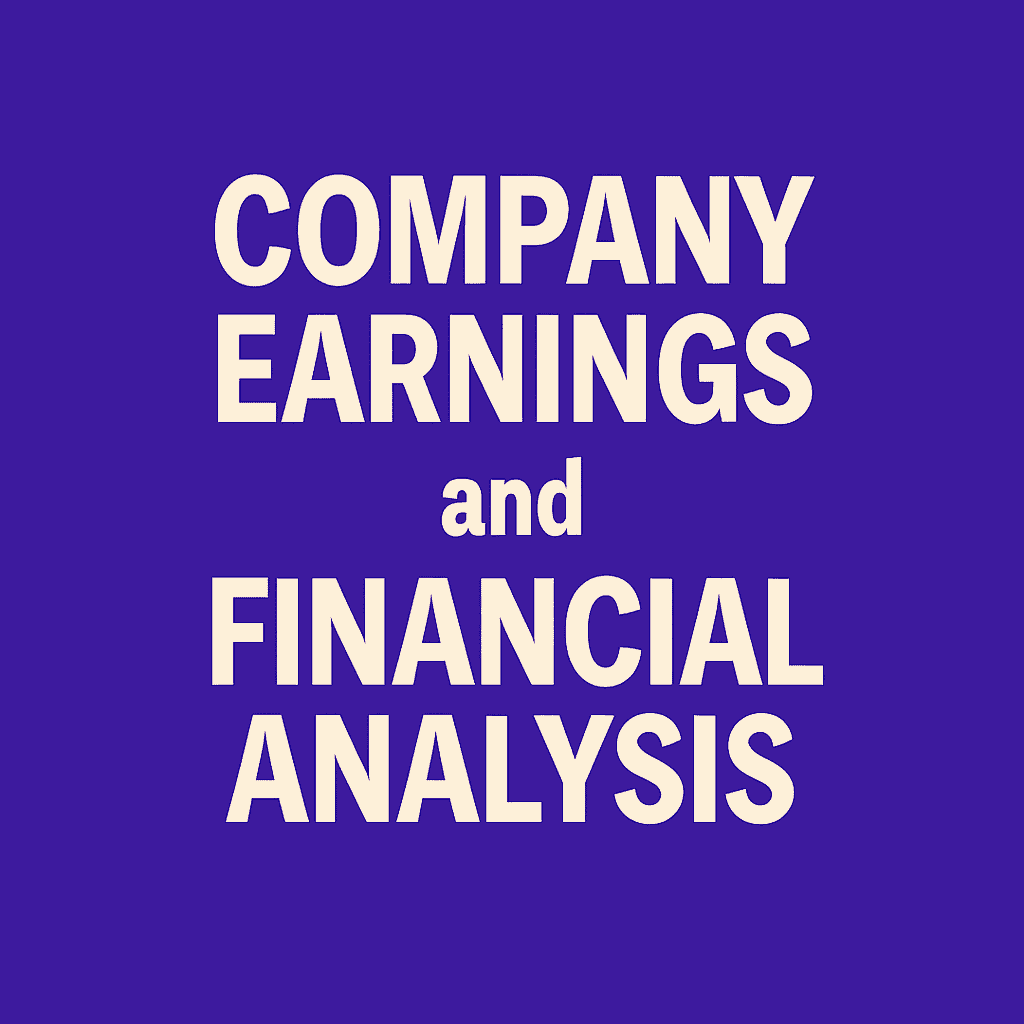Advanced Micro Devices, Inc. (NASDAQ: AMD)
Q2 2025 Financial Analysis | August 5, 2025
Executive Summary
AMD delivered exceptional Q2 2025 results with record revenue of $7.7 billion, representing 32% year-over-year growth. Despite facing approximately $800 million in inventory and related charges due to U.S. export restrictions on AMD Instinct MI308 data center GPUs, the company demonstrated strong underlying demand across its computing and AI product portfolio. Non-GAAP diluted earnings per share reached $0.48, while GAAP EPS was $0.54, benefiting from tax adjustments. The company is well-positioned for continued growth with the upcoming ramp of AMD Instinct MI350 series accelerators and ongoing market share gains in both server and PC processors.
Q2 2025 Highlights
Financial Performance
AMD’s Q2 2025 revenue performance was exceptional, achieving record quarterly revenue of $7.7 billion, representing 32% year-over-year growth. This strong top-line performance was driven by robust demand across the company’s computing and AI product portfolio, particularly in the Client and Gaming segments.
Gross margin performance was significantly impacted by U.S. export restrictions. GAAP gross margin declined to 40% from 49% in the prior year, while non-GAAP gross margin decreased to 43% from 53%. However, excluding the approximately $800 million in inventory and related charges associated with export controls on AMD Instinct MI308 data center GPU products, non-GAAP gross margin would have been approximately 54%, demonstrating strong underlying profitability.
Operating performance showed mixed results. While GAAP operating income turned to a loss of $134 million compared to income of $269 million in Q2 2024, this was primarily due to the export-related charges. Non-GAAP operating income of $897 million, though down 29% year-over-year, demonstrates the company’s continued operational strength when accounting for one-time impacts.
Net income and earnings per share told a more positive story. GAAP net income surged to $872 million from $265 million in the prior year, translating to diluted EPS of $0.54, up an impressive 238% year-over-year. This strong performance was aided by a significant tax benefit related to the resolution of uncertain tax positions. Non-GAAP diluted EPS was $0.48, down 30% from the prior year but still reflecting solid underlying profitability.
The company continued to generate strong cash flows, achieving record free cash flow during the quarter. This robust cash generation reflects AMD’s efficient capital allocation and strong demand for its products across multiple segments, positioning the company well for continued investment in growth initiatives and shareholder returns.
Segment Performance
| Segment | Revenue ($B) | YoY Change | Operating Income | Key Drivers |
|---|---|---|---|---|
| Data Center | $3.2 | +14% | -$155M | Strong EPYC demand offset by MI308 export restrictions |
| Client and Gaming | $3.6 | +69% | $767M | Record client revenue; strong gaming GPU demand |
| Embedded | $0.8 | -4% | $275M | Mixed demand across end markets |
Data Center segment revenue increased 14% year-over-year to $3.2 billion, demonstrating continued strength in server processor demand. Strong performance from AMD EPYC processors more than offset the headwinds from export restrictions impacting AMD Instinct MI308 shipments to China. The segment’s operating loss of $155 million primarily reflects the impact of the export-related inventory charges, as the underlying business fundamentals remain strong.
Client and Gaming segment delivered outstanding performance with revenue increasing 69% year-over-year to $3.6 billion. Client revenue reached a record $2.5 billion, up 67% year-over-year, driven by strong demand for the latest “Zen 5” AMD Ryzen desktop processors and a richer product mix. Gaming revenue was $1.1 billion, up 73% year-over-year, benefiting from increased semi-custom revenue and strong demand for AMD Radeon GPUs. Operating income of $767 million reflects the strong margin profile of these higher-value products.
Embedded segment revenue was $824 million, down 4% year-over-year, as demand in end markets remained mixed. Despite the revenue decline, the segment maintained strong profitability with operating income of $275 million, demonstrating effective cost management and the value proposition of AMD’s embedded solutions across diverse applications.
The strong performance across Client and Gaming segments, combined with continued EPYC processor momentum in the Data Center segment, demonstrates AMD’s success in capturing market share across key computing markets. The company’s diversified portfolio provides resilience against market-specific challenges while positioning AMD to benefit from multiple growth drivers.
Product & Technology Highlights
AMD continued to expand its leadership position across computing and AI markets with significant product announcements and strategic partnerships:
AI and Data Center Innovations
- AMD Instinct MI350 Series: Next-generation AI accelerators with leadership performance, efficiency, and scalability for generative AI and high-performance computing
- “Helios” Rack-Scale Solution: Next-generation solution powered by AMD Instinct MI400 GPUs, AMD EPYC “Venice” CPUs, and AMD Pensando “Vulcano” NICs
- AMD ROCm 7 Platform: Latest version of AMD’s open-source AI software stack with expanded support, tools, and enterprise capabilities
- AMD Developer Cloud: Platform providing developers with on-demand access to high-performance AMD Instinct MI300X GPUs
Strategic Partnerships
- HUMAIN partnership deploying 500 megawatts of AI compute capacity over five years
- Red Hat collaboration for high-performance AI inference with vLLM on AMD Instinct GPUs
- KDDI agreement leveraging 4th Gen AMD EPYC CPUs for advanced 5G virtualized networks
- Nokia utilizing 5th Gen AMD EPYC processors for Nokia Cloud Platform
- Dell PowerEdge XE9785 and XE9785L servers featuring AMD Instinct MI350 Series GPUs
Client and Gaming Expansion
- AMD Ryzen Threadripper 9000WX and PRO 9000X Series: Leadership workstation compute for demanding workloads
- Radeon RX 9060 XT: Leadership gaming performance-per-dollar graphics card
- AMD Radeon AI PRO R9700 GPU: Designed for local AI inference, model finetuning, and creative workloads
Embedded and Edge Computing
- AMD Spartan UltraScale+ FPGA devices for cost-sensitive edge applications
- Bosch collaboration on next-generation robotaxi services using AMD Versal devices
- AMD EPYC 4005 Series processors for growing businesses and hosted IT services
These innovations reinforce AMD’s position as a leader in high-performance computing across data center, client, and embedded markets. The company’s commitment to open ecosystems and strategic partnerships continues to drive adoption and expand market opportunities.
Strategic Transaction: ZT Systems
AMD announced a significant strategic transaction that will reshape its AI infrastructure capabilities:
Transaction Details
- Sale of ZT Systems’ data center infrastructure manufacturing business to Sanmina for $3 billion
- Transaction includes cash and stock, with up to $450 million in contingent payments
- Expected to close near the end of 2025, subject to regulatory approvals
- Sanmina will become a preferred manufacturing partner for AMD cloud rack and cluster-scale AI solutions
This transaction demonstrates AMD’s strategic focus on design and innovation while leveraging partnerships for manufacturing scale. By divesting the manufacturing operations while maintaining a preferred partnership relationship, AMD can:
- Focus resources on core competencies in semiconductor design and technology development
- Maintain access to world-class manufacturing capabilities through the Sanmina partnership
- Generate significant proceeds to fund continued investment in R&D and market expansion
- Reduce operational complexity while preserving customer relationships and delivery capabilities
The timing of this transaction aligns well with AMD’s growing AI accelerator business and the ramp of the MI350 series, positioning the company to capture the expanding AI infrastructure market while maintaining operational efficiency.
Q3 2025 Outlook
AMD provided strong guidance for Q3 2025, reflecting continued momentum across its business segments:
- Revenue expected to be approximately $8.7 billion, plus or minus $300 million
- Represents approximately 28% year-over-year growth and 13% sequential growth at the midpoint
- Non-GAAP gross margin expected to be approximately 54%
- Outlook excludes any revenue from AMD Instinct MI308 shipments to China
The strong Q3 outlook is driven by several key factors:
- AI Accelerator Ramp: Expected growth from AMD Instinct MI350 series accelerators entering production
- Server Processor Strength: Continued market share gains with AMD EPYC processors
- Client Momentum: Sustained demand for Ryzen processors across desktop and mobile segments
- Gaming Growth: Strong trajectory in both discrete GPUs and semi-custom solutions
Management expressed confidence in delivering significant growth in the second half of 2025, positioning AMD well to capitalize on the expanding AI market while maintaining strength in traditional computing segments. The company’s diversified product portfolio and strong execution capabilities provide multiple drivers for continued growth.
Risks & Opportunities
Opportunities
Risks
Conclusion
Strengths
- Record quarterly revenue of $7.7 billion (+32% YoY)
- Strong performance across Client and Gaming segments (+69% YoY)
- Continued data center market share gains with EPYC processors
- Robust AI accelerator product roadmap with MI350 series
- Strong cash flow generation and financial flexibility
Areas to Monitor
- Impact of export restrictions on China business (~$800M charges)
- Margin pressure from inventory adjustments and mix shifts
- Competitive dynamics in rapidly evolving AI accelerator market
- Execution risk on new product ramps and customer wins
- Regulatory environment and geopolitical considerations
Summary
AMD delivered outstanding Q2 2025 results with record revenue of $7.7 billion, demonstrating the strength of its diversified computing portfolio. While the company faced significant headwinds from U.S. export restrictions that resulted in approximately $800 million in inventory charges, the underlying business fundamentals remain strong across all segments.
The 69% year-over-year growth in Client and Gaming segments highlights AMD’s success in capturing market share with its latest Ryzen processors and gaming GPUs. Data Center segment growth of 14%, despite export restrictions, demonstrates continued EPYC processor momentum and sets the stage for AI accelerator growth with the MI350 series.
Looking ahead, AMD’s strong Q3 2025 outlook of approximately $8.7 billion in revenue (+28% YoY) reflects confidence in the company’s product roadmap and market position. The strategic divestiture of ZT Systems’ manufacturing business provides additional resources for R&D investment while maintaining manufacturing partnerships.
With its leadership in high-performance computing, strong product portfolio across AI, server, and client markets, and robust financial position, AMD is well-positioned to capitalize on the expanding AI opportunity while continuing to gain share in traditional computing segments. The company’s commitment to open ecosystems and strategic partnerships further strengthens its competitive position in the evolving technology landscape.
Source: AMD Q2 2025 Earnings Release


